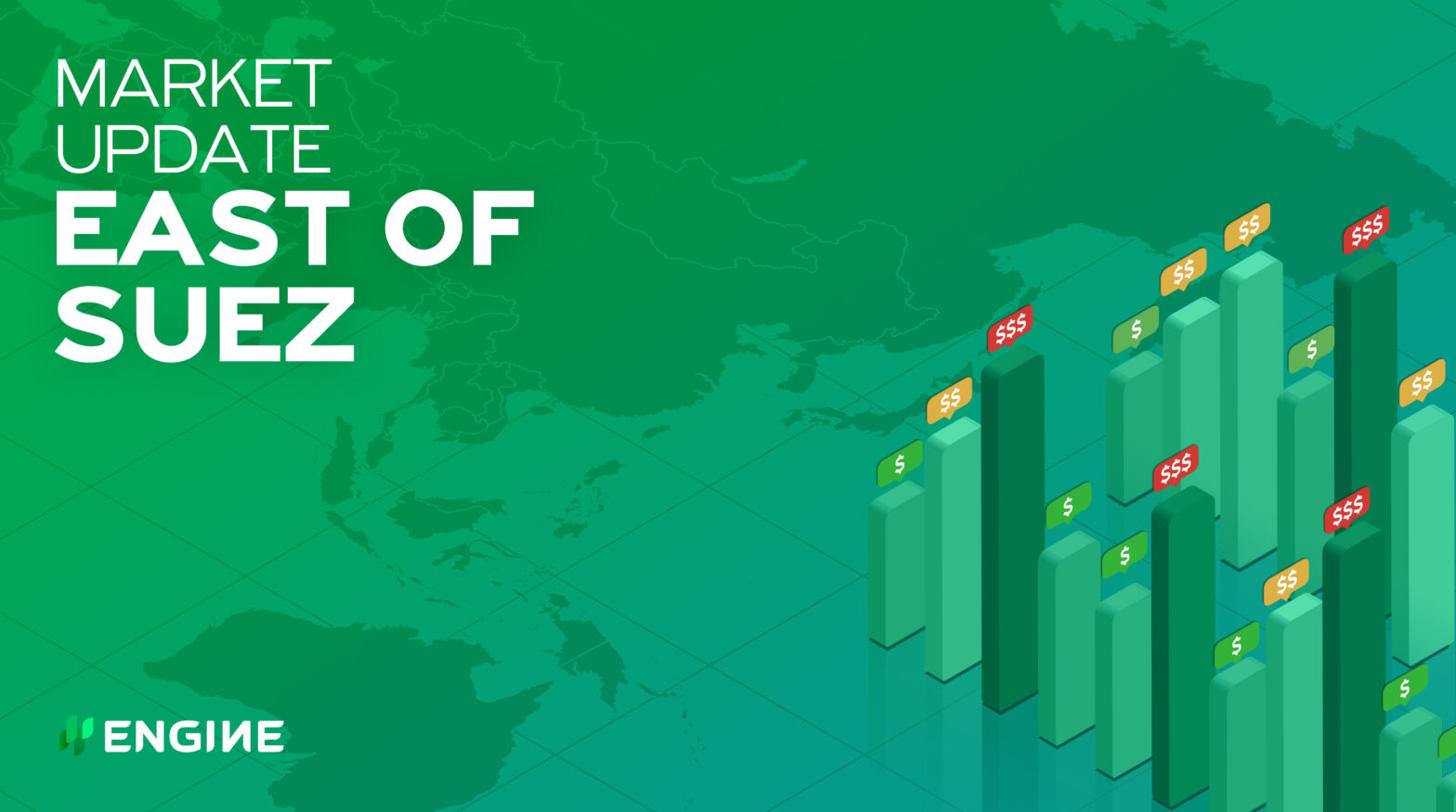East of Suez fuel prices are mostly down on the day from Friday in response to slight fall in Brent crude, and VLSFO availability remains tight in Singapore.
Changes on the day from Friday, to 16.00 SGT (08.00 GMT) today:
- VLSFO prices down in Fujairah ($10/mt), Zhoushan ($3/mt) and Singapore ($2/mt)
- LSMGO prices up in Singapore ($26/mt) and Fujairah ($12/mt), and down in Zhoushan ($1/mt)
- HSFO380 prices down in Singapore ($4/mt) and Fujairah ($3/mt)
Singapore and Fujairah’s LSMGO prices have gained with help from higher-priced stem today. With VLSFO values falling with Brent, their LSMGO-VLSFO spreads have sprung up to $110/mt and $160/mt, respectively.
VLSFO supplies in Singapore remain constrained owing to a pick-up in demand and persistent loading delays at the Universal Terminal on Jurong Island, according to a source. Lead time of up to 12 days are advised for both VLSFO and HSFO380. Prompt LSMGO availability has also gotten tighter, with 7-10 days ahead recommended.
In Fujairah, lead times for VLSFO, HSFO380 and LSMGO of around 5-6 days are recommended amid a shortage of incoming cargo volumes. Prompter stems are available at a premium.
In Zhoushan, a supplier is expected to receive more VLSFO by 18 November to replenish stocks, according to a source. LSMGO is also tight in the Chinese ports. An LSMGO cargo is expected to replenish stocks in December. Only two Chinese suppliers have HSFO380 to supply.
VLSFO remains tight in ports in South Korea as only one bunker supplier produces large volumes to replenish its stocks at the moment. Other suppliers rely heavily on imports.
In South Korea, availability of all fuel grades has gradually improved after bunkering resumed on 12 November following a bout of bad weather last week.
Hi5 spreads have come down by $7/mt to $121/mt in Fujairah, while up by $2/mt to $172/mt in Singapore.
Singapore’s Hi5 spread widened rapidly through October as VLSFO supply tightened, and has reached levels not seen since the immediate aftermath of the IMO 2020 transition in February 2020.
Brent
Front-month ICE Brent has traded slightly down since Friday, extending its decline by $0.17/bbl to $81.71/bbl at 16.00 SGT (08.00 GMT) today.
Soaring US inflation and gasoline prices could trigger a release from US emergency crude reserves and weigh on Brent. US Senate Majority Leader Chuck Schumer and 11 other Democrats have called on President Biden to take decisive action amid lower polling numbers and signs that unaffordable fuel prices could hold back the country’s economic recovery, Reuters reports.
Uncertainty about future market direction has brought net long positions on Brent down to yearly lows, Saxo Bank wrote in a note.
Iran-US nuclear talks are set to resume later this month. Prospects for a resolution between the parties, and the eventual possibility of more Iranian crude phased back into the market, will likely lead to more price volatility, according to DailyFX analyst Dimitri Zabelin.
“Expectations seem to be heavily tilted against the likelihood of a breakthrough. If progress is achieved nevertheless, the adjustment to new geopolitical circumstances will probably manifest in larger-than-usual price swings,” Zabelin says.
